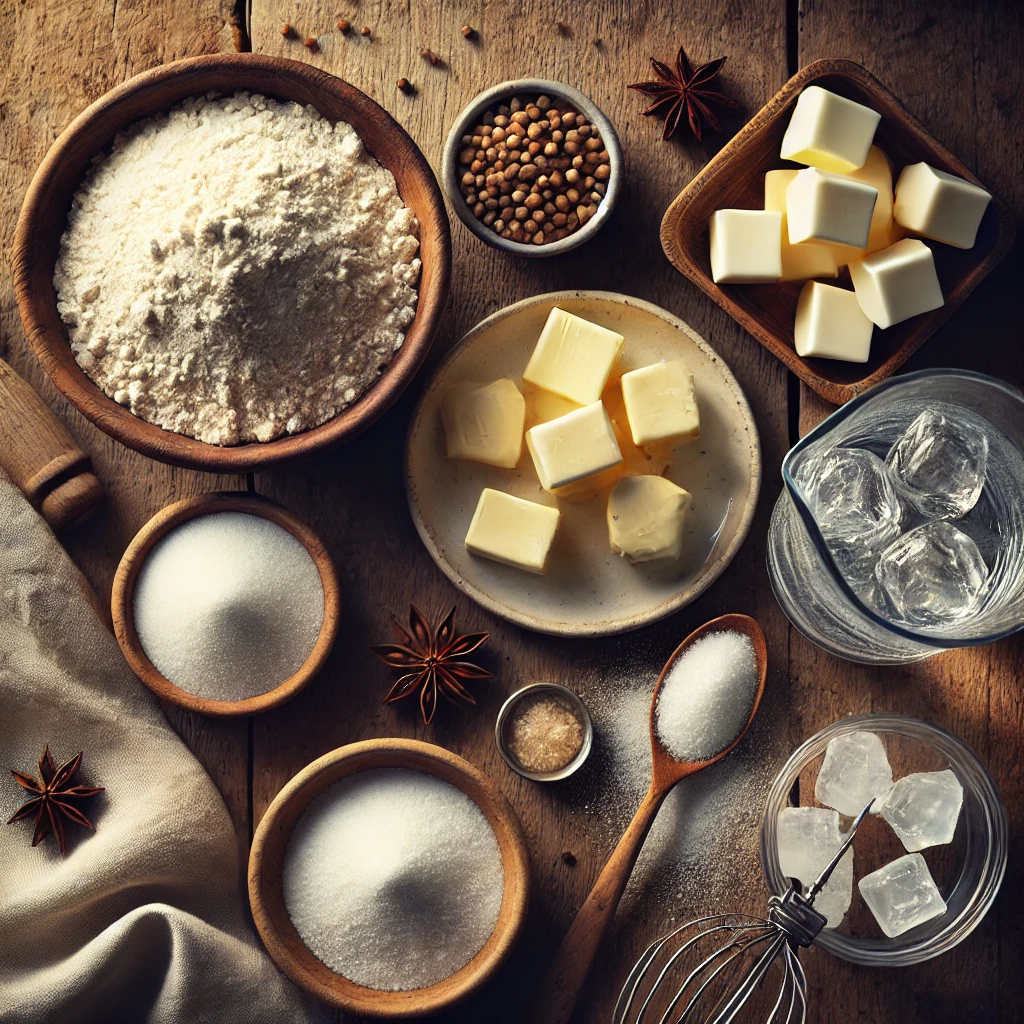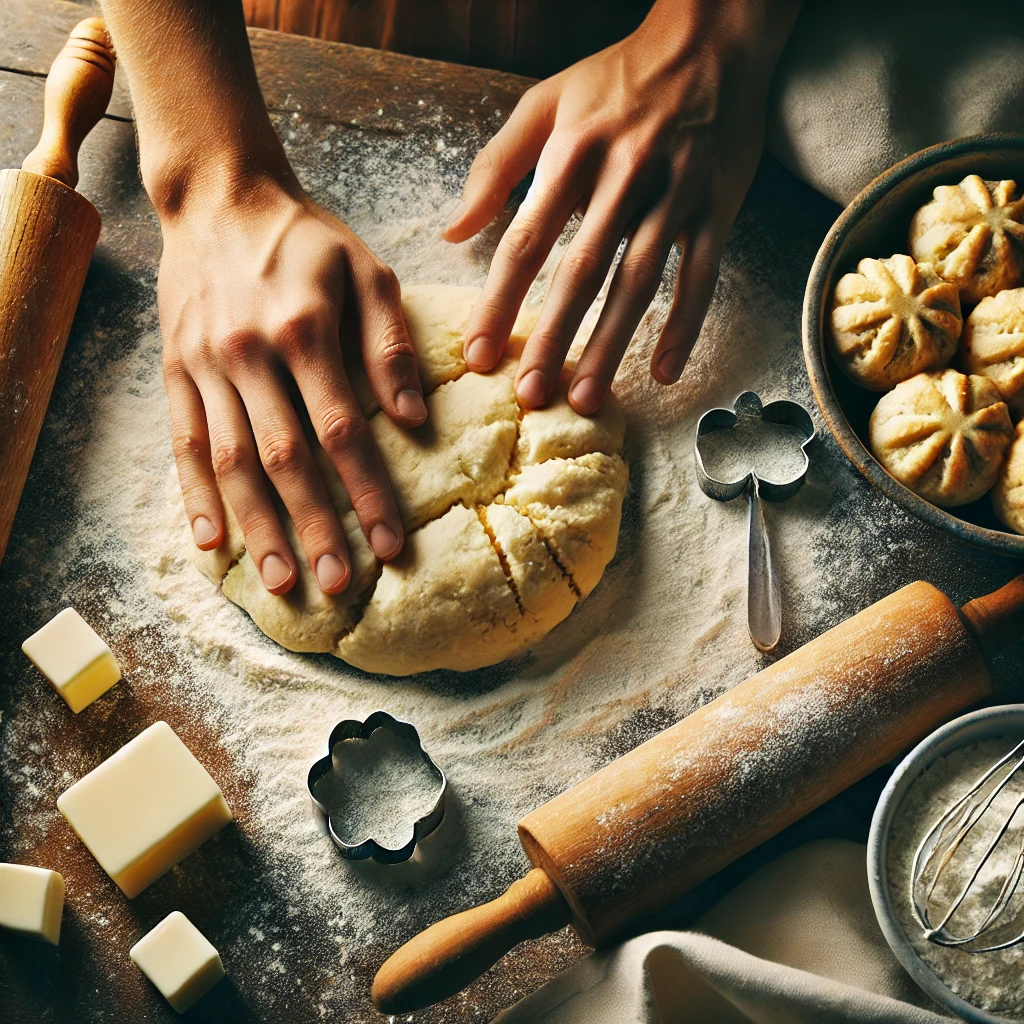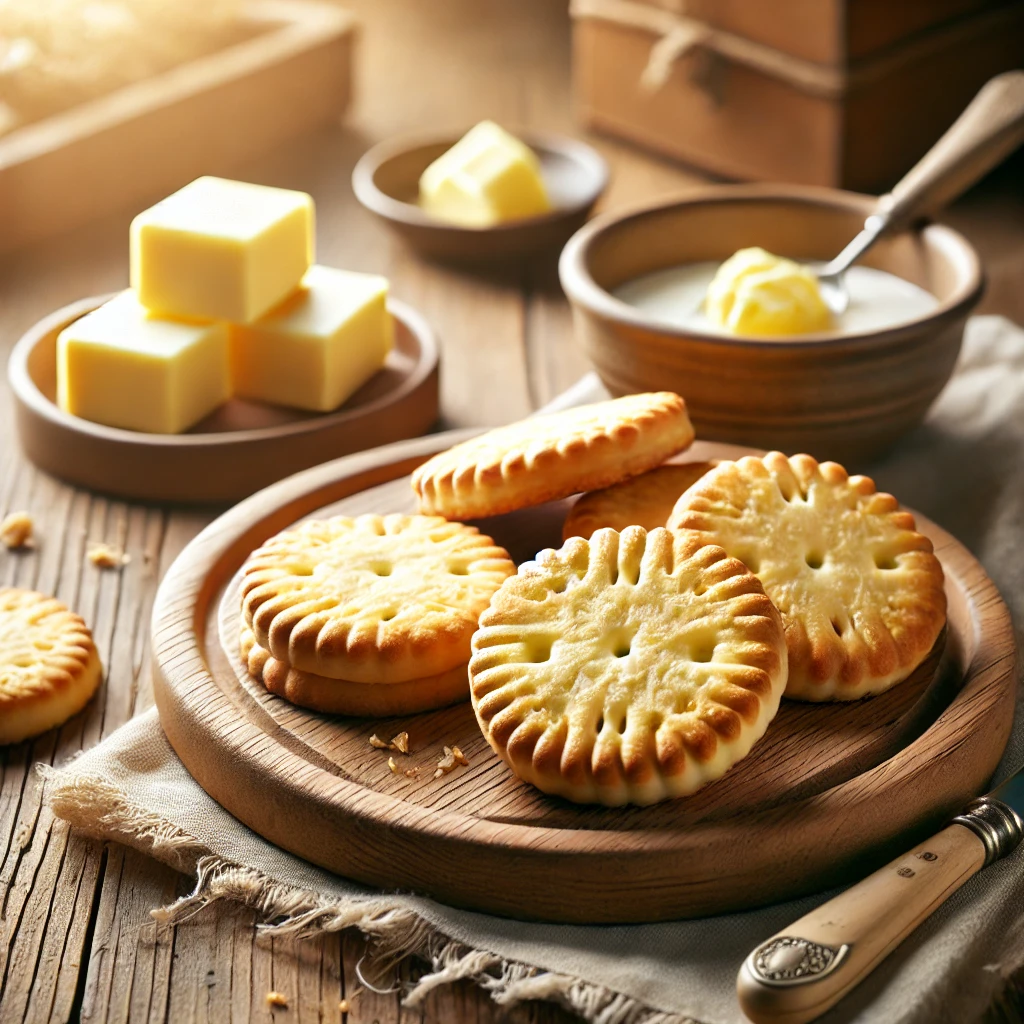Are you craving soft, flaky butter biscuits but don’t have milk on hand? Don’t worry! This simple recipe will guide you through making buttery biscuits that are deliciously golden and tender without any milk. Whether you’re lactose intolerant, out of milk, or just exploring a dairy-free twist, this recipe is perfect for you.
Why Make Butter Biscuits Without Milk?
Milk is often used in biscuit recipes to add moisture and richness, but you can still achieve the perfect biscuit texture without it. Here’s why this milk-free version stands out:
- Budget-friendly: Uses ingredients already in your pantry.
- Lactose-free: Ideal for those avoiding dairy.
- Simple and quick: No need for special ingredients.
With these biscuits, you get the same flaky layers and buttery goodness as traditional recipes.
Ingredients for Butter Biscuits (No Milk)

Before you start, gather these simple ingredients:
- 2 cups all-purpose flour
- 1 tablespoon baking powder
- 1/2 teaspoon salt
- 1/2 cup cold butter (unsalted is preferred, but salted works too)
- 2/3 cup water (ice-cold for the best results)
- Optional: 1 teaspoon sugar for a slightly sweet flavor
Step-by-Step Instructions
1. Preheat Your Oven
- Set your oven to 425°F (220°C) and allow it to preheat while you prepare the dough.
- Line a baking sheet with parchment paper or lightly grease it.
2. Combine Dry Ingredients
- In a large mixing bowl, whisk together:
- Flour
- Baking powder
- Salt
- (Add sugar here if using)
This step ensures an even rise and uniform flavor.
3. Cut in the Butter
- Take your cold butter and cut it into small cubes.
- Using a pastry cutter or your fingers, mix the butter into the dry ingredients until it resembles coarse crumbs.
- Pro Tip: Cold butter is key to flaky biscuits. Work quickly to keep the butter from melting.
4. Add Water and Form the Dough
- Slowly pour in the ice-cold water while gently stirring.
- Mix just until the dough comes together. Avoid overworking, as this can make the biscuits tough.
5. Shape the Biscuits
- Transfer the dough to a lightly floured surface.
- Pat or roll it out to about 1/2-inch thickness.
- Use a round cutter or a glass to cut out biscuits. Avoid twisting the cutter for a cleaner rise.
6. Bake to Perfection
- Place the biscuits on the prepared baking sheet, leaving about 1 inch of space between them.
- Bake in the preheated oven for 12-15 minutes, or until the tops are golden brown.
7. Serve and Enjoy!
- Remove from the oven and let the biscuits cool slightly.
- Serve warm with your favorite spreads like butter, jam, or honey.
Tips for the Best Butter Biscuits Without Milk
- Chill your ingredients: Cold butter and water are essential for creating those iconic layers.
- Don’t overwork the dough: Mix gently to maintain a tender texture.
- Use a hot oven: High heat helps the biscuits rise quickly and develop a crispy crust.
- Experiment with flavors: Add herbs, cheese, or spices to customize your biscuits.
Why These Biscuits are a Winner
These biscuits prove that milk isn’t a must for a satisfying, buttery texture. Instead, water brings just the right amount of moisture, while butter does the heavy lifting in terms of flavor and richness. The result is a versatile biscuit that pairs beautifully with breakfast, lunch, or dinner.
Pairing Ideas for Butter Biscuits
These milk-free butter biscuits are as versatile as they are tasty! Here are some pairing ideas to enjoy them to the fullest:
- Savory: Serve alongside soup, stew, or chili.
- Sweet: Top with fresh fruit, whipped cream, or a drizzle of honey.
- Breakfast: Pair with scrambled eggs, bacon, or sausage gravy.
Common Questions About Butter Biscuits Without Milk
1. Can I use oil instead of butter?
Yes, but the texture will be slightly less flaky. Opt for coconut oil or vegetable shortening for a similar result.
2. What can I use instead of water?
You can substitute water with almond milk, oat milk, or any other milk alternative.
3. Can I freeze the dough?
Absolutely! Shape the biscuits, freeze them on a tray, then transfer to a freezer bag. Bake directly from frozen, adding a few extra minutes to the bake time.
4. How do I reheat leftover biscuits?
Warm them in the oven at 350°F (175°C) for 5-7 minutes, or microwave for 15-20 seconds.
5. Can I make these gluten-free?
Yes! Substitute all-purpose flour with a gluten-free baking mix. Check for additional binding agents like xanthan gum.
Butter Biscuit Recipe Without Milk: Tips, Tricks, and Variations (Part 2)
Welcome back to the ultimate guide for crafting delicious, milk-free butter biscuits! In Part 2, we’ll dive deeper into proven techniques, variations, and ways to elevate your biscuits with creative twists. Whether you’re a biscuit-making newbie or a seasoned baker, these insights will help you perfect your recipe and try exciting new flavors.
Expert Tips for Perfect Biscuits Every Time
Achieving the ideal butter biscuit requires attention to detail. Here are some expert techniques to ensure your biscuits turn out perfectly every time:
1. Keep Everything Cold
- Cold butter is crucial: If the butter softens before baking, it won’t create the pockets of steam needed for flaky layers.
- Chill your butter, water, and even your mixing bowl if necessary.
2. Avoid Overmixing
- Overworking the dough activates gluten, leading to dense and chewy biscuits.
- Mix just until the dough comes together, even if it looks a little shaggy.
3. Use the Right Tools
- A pastry cutter or fork works best for incorporating butter into the dry ingredients.
- Avoid using warm hands, which can melt the butter.
4. Choose Your Flour Wisely
- All-purpose flour provides a good balance of structure and tenderness.
- For even softer biscuits, consider blending all-purpose flour with cake flour.
5. Space Biscuits Properly
- For crispier edges, leave space between biscuits on the baking sheet.
- If you prefer soft sides, place the biscuits close together so they bake into each other.

Variations on the Classic Recipe
Once you’ve mastered the basic milk-free butter biscuit recipe, it’s time to get creative. Here are some variations to try:
1. Cheddar Herb Biscuits
- Add 1 cup of shredded cheddar cheese and 1 tablespoon of chopped fresh herbs (like parsley or rosemary) to the dry ingredients.
- These biscuits pair wonderfully with soups and savory dishes.
2. Sweet Cinnamon Biscuits
- Mix 2 tablespoons of sugar and 1 teaspoon of ground cinnamon into the dry ingredients.
- Brush the tops with melted butter and sprinkle with a cinnamon-sugar blend before baking.
3. Garlic Butter Biscuits
- Stir in 1 teaspoon of garlic powder and a pinch of paprika for a flavorful twist.
- Brush the baked biscuits with melted garlic butter for extra flavor.
4. Vegan Butter Biscuits
- Replace butter with plant-based margarine or coconut oil.
- Substitute water with almond or soy milk for added creaminess.
5. Whole Wheat Biscuits
- Swap out half of the all-purpose flour for whole wheat flour to add a nutty flavor and extra nutrients.
Troubleshooting Common Biscuit Problems
If your biscuits don’t turn out as planned, don’t worry! Here’s how to fix common issues:
1. Biscuits Didn’t Rise Well
- Problem: The dough was overworked or the baking powder was inactive.
- Solution: Use fresh baking powder and handle the dough gently.
2. Dry or Crumbly Biscuits
- Problem: Not enough moisture or overbaking.
- Solution: Add a little more water to the dough and reduce the bake time slightly.
3. Flat Biscuits
- Problem: Butter was too warm or dough was rolled too thin.
- Solution: Ensure butter is cold and roll the dough to at least 1/2-inch thickness.
4. Dense Texture
- Problem: Overmixing or using too much flour.
- Solution: Mix just until combined and measure flour accurately.
Pairing Butter Biscuits with Creative Dishes
Butter biscuits are incredibly versatile. Here are some pairing ideas to make them the star of your meals:
1. Breakfast Favorites
- Use biscuits as the base for eggs Benedict or breakfast sandwiches.
- Serve with scrambled eggs, sausage gravy, or crispy bacon.
2. Soups and Stews
- Pair with hearty soups like tomato basil, chicken noodle, or beef stew.
- Dip them into chili or creamy clam chowder for a comforting meal.
3. Dessert Creations
- Slice biscuits in half and layer with whipped cream and fresh berries for an easy shortcake.
- Drizzle with chocolate syrup or caramel for a sweet treat.
4. Snack or Appetizer
- Add a dollop of cream cheese and smoked salmon for a sophisticated snack.
- Spread with hummus or spinach dip for a quick and healthy bite.
Storing and Freezing Biscuits
Making biscuits ahead of time is a game-changer. Here’s how to store and freeze them for convenience:
1. Storing Biscuits
- Keep baked biscuits in an airtight container at room temperature for up to 2 days.
- Refrigerate them for up to 5 days, reheating in the oven or microwave when ready to eat.
2. Freezing Biscuits
- Before Baking: Shape the dough into biscuits, freeze on a baking sheet, and transfer to a freezer bag. Bake directly from frozen, adding a few extra minutes.
- After Baking: Cool the biscuits completely before freezing. Reheat in the oven for the best texture.
Why This Recipe Stands Out
This butter biscuit recipe is not only milk-free but also endlessly customizable. It’s a go-to for anyone who wants:
- A quick, easy baking project with no fancy ingredients.
- A delicious, dairy-free option that doesn’t sacrifice flavor or texture.
- A base recipe that can be tailored to fit any meal or occasion.
More FAQs About Milk-Free Butter Biscuits
1. Can I use self-rising flour instead of all-purpose flour?
Yes! If using self-rising flour, omit the baking powder and salt.
2. Why is my dough too sticky?
You may have added too much water. Gradually add a little more flour until the dough is manageable.
3. Can I make this recipe gluten-free?
Yes! Substitute with a gluten-free flour blend and check for xanthan gum if needed.
4. How can I make these biscuits sweeter?
Add 2-3 tablespoons of sugar to the dry ingredients, or brush the tops with honey after baking.
5. Can I use margarine instead of butter?
Yes, margarine works as a substitute, but the flavor may differ slightly.
6. Do I need to sift the flour?
Sifting helps create lighter biscuits but isn’t mandatory. Whisking the dry ingredients also works well.
7. Can I use a food processor to mix the dough?
Yes, but pulse gently to avoid overmixing.
8. How thick should I roll the dough?
Aim for at least 1/2 inch to ensure tall, flaky biscuits.
9. Can I double the recipe?
Absolutely! Just ensure you don’t overcrowd the baking sheet.
10. What toppings work well with these biscuits?
Try butter, honey, jam, gravy, or even a dollop of clotted cream for a decadent treat.

